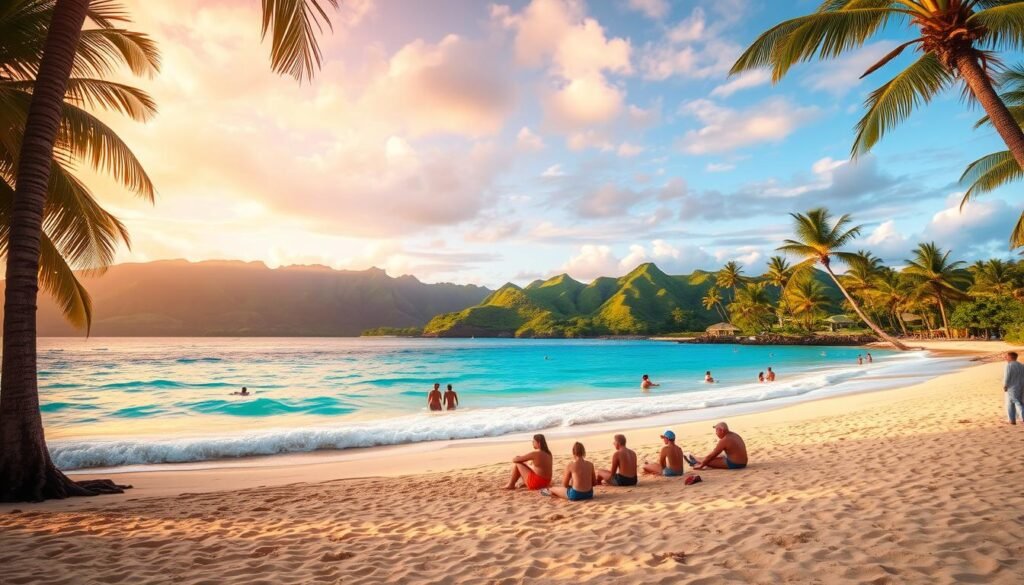Nearly half of all travelers flock to these islands during winter and mid-summer peaks. That surge reshapes prices, crowds, and activity availability fast.
I promise to help you pick dates based on weather, crowds, and budget so your trip matches your priorities.
Hawaii stays pleasant year-round thanks to mild temperatures and local microclimates. You can find sun on many days, even in wetter months.
I flag winter holidays through March and July–August as the busiest spans, while April–June and September–October often offer the sweetest balance of value and calm.
Early November and late March can cut costs without sacrificing much sunshine. I’ll walk you through seasonal highlights, activity timing, and booking tips.
For a deeper dive and monthly pricing patterns, see my full guide on the best time to visit.
Key Takeaways
- Year-round destination: mild weather and varied microclimates.
- Peak crowds fall in winter and mid-summer; book early for flights and cars.
- Shoulder months (Apr–Jun, Sep–Oct) balance price and conditions.
- Early Nov and late Mar often yield lower fares without much tradeoff.
- Different islands shine at different seasons for activities like surfing or whale watching.
My TL;DR: Sweet Spots, Weather, and Deals at a Glance
I’ll cut to the chase: here’s a quick map of sweet spots for weather, crowds, and deals so you can plan fast.
Short answer: aim for April–June or September–October for warm days, lower crowds, and friendlier prices.
- Deals: early November and late March often offer cheaper fares with good sun.
- Peaks: winter and mid-summer bring high demand—book months ahead for flights, hotels, and rental cars.
- Activities: whales peak December–March; north shore surf hits in winter, south shores shine in summer.
“Microclimates mean a quick pivot—mornings or a leeward beach often beat the forecast.”
| Focus | Top Pick | Why |
|---|---|---|
| Balance | Apr–Jun | Warm weather, fewer crowds, steady conditions |
| Deals | Early Nov / Late Mar | Lower airfares, good sunshine odds |
| City value | Apr (Honolulu), Sep (Lahaina) | Historic hotel price dips |
Final note: pick dates by goal—weather, crowds, or budget—and mark key festivals on your calendar before you book.
When is the best time to visit hawaii
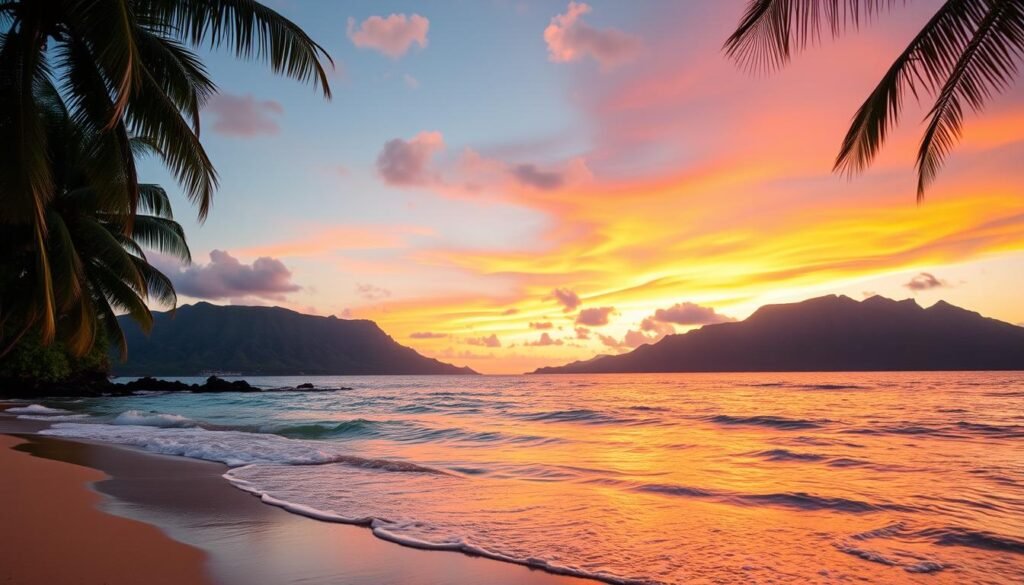
My quick guide sorts ideal months by what matters most: sunny days, quiet beaches, or lower costs.
My quick answer by goal: weather, crowds, or price
For top weather: I favor late spring and early fall. Those months give warm days and stable conditions with fewer heat spikes.best-places-to-visit-in-usa
For low crowds: shoulder months shine. April–June and September–mid-December usually have lighter foot traffic and calmer booking pressure.
For low prices: I point to late March and early November. Flights and hotels often drop, while most beaches stay pleasant.
Future-looking note: why early November and late March often win
I watch demand cycles. Early November falls after holiday rush and before winter bookings. Late March sits after spring breaks and before summer spikes.
Both windows tend to combine value with good weather and smaller crowds.
| Goal | Top months | Why |
|---|---|---|
| Weather | May, Sep | Warm days, stable trade winds |
| Crowds | Apr–Jun, Sep–Nov | Shoulder-season calm, fewer lines |
| Price | Late Mar, Early Nov | Flight sales, hotel dips |
Quick tip: I lock rental cars early for peak months and check festival dates to pick a month that fits your vibe.
Hawaii by Season: Weather, Crowds, and Vibes
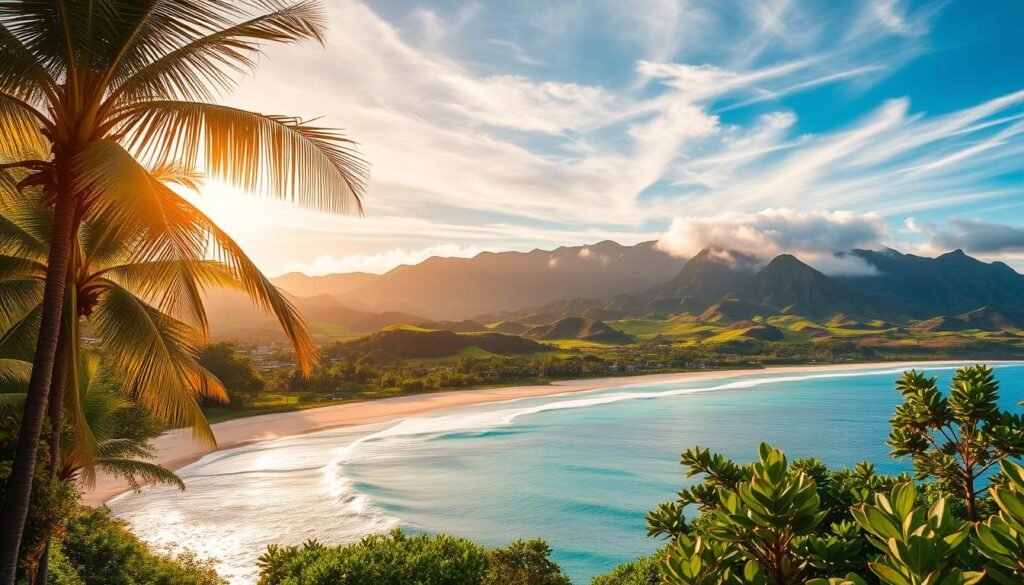
I break down each season so you can match island rhythms with your travel style.
Spring (April–June): this season is my value play. Rain eases, waterfalls still flow from winter moisture, and crowds thin. It’s a great month for hiking and quiet beach mornings, with steady weather that favors outdoor plans.best-places-to-visit-in-canada
Summer (July–August): bright, lively, and family-forward. South shores calm for snorkeling and clear ocean conditions. Days are warm and dry, but expect peak pricing and busier beaches during this month.
Fall (September–October): the sleeper hit. Ocean water hits its warmest stretch and visitor numbers drop. Hurricane season runs through these months, yet big storms stay rare. For warm water and low crowds, this season often wins.
Winter (December–March): quick night and morning showers are common, while large north and west swells draw surfers. Whale season peaks and holiday demand raises prices and minimum stays. Leeward resorts still offer sunnier odds.
| Season | Weather | Vibe | Booking advice |
|---|---|---|---|
| Spring | Dry, lush | Quieter, value | Flexible, book weeks ahead |
| Summer | Warm, calm water | Family-focused, busy | Book months early |
| Fall | Warmest water | Low crowds, warm ocean | Good deals, moderate booking |
| Winter | Night rains, big swells | Surf and whale season, peak demand | Reserve far ahead |
Match a season to your goals: spring for hikers and value seekers; summer for families; fall for warm water lovers; winter for surf fans and whale watchers.
Best Time by Month: Festivals, Surf, and Standout Experiences
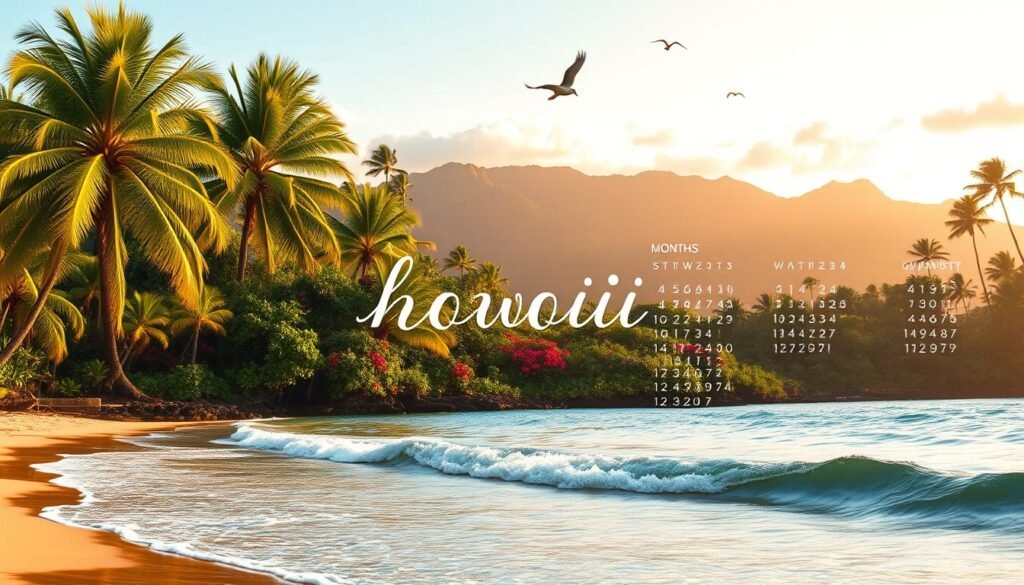
Below I break down every month with standout festivals, surf windows, and climate notes for smarter planning.
January: Big north and west swells on Oahu bring pro comps and dramatic shore viewing. Cooler temperatures favor morning coffee runs and quiet beach walks.things-to-do-in-long-beach
February: World Whale Day and POW! WOW! Hawaii add culture and art. This month suits romantic travel and prime whale watching near Maui.
March–May: March hosts Honolulu Festival and Kona Beer Festival as rains ease. April brings Waikiki SPAM JAM and Brewers Festival. May shines with Lei Day and the Lantern Floating Ceremony—sunny, dry days for hikes and beach time.
June–August: June has Pan Pacific and King Kamehameha parades. July offers surf film showcases and hula festivals. August is hot and dry with Na Hula events—great month for sunrise hikes and late swims.
September–December: September’s Aloha and Okinawan festivals pair with the warmest water. October highlights Food & Wine with brief fall showers. November starts the Vans Triple Crown as rain grows. December brings Honolulu City Lights and the Hawaii Bowl; book early for holidays.
| Month group | Highlight | Why go |
|---|---|---|
| Jan–Feb | Big waves & whales | Surfing spectacle, whale sightings |
| Mar–May | Festivals & dry days | Culture, food events, low rain |
| Jun–Aug | Parades & hot weather | Warm temperatures, outdoor festivals |
| Sep–Dec | Warm water & holidays | Warmest ocean, holiday events |
I map each month to marquee events so you can align an itinerary with culture, surf, and beach rhythms.
Best Time by Activity: Surfing, Snorkeling, Hiking, and More
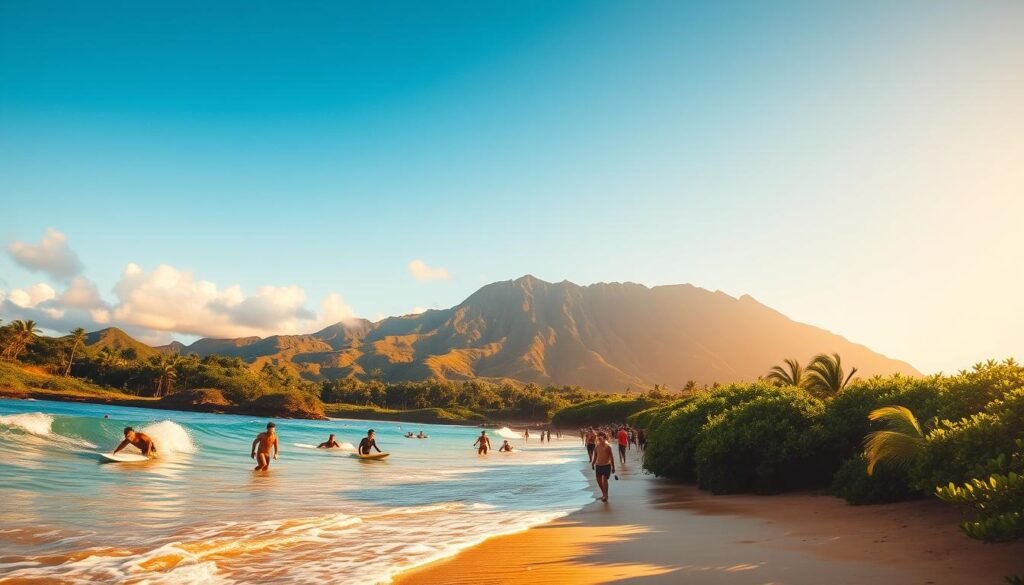
I outline ideal activity windows so every day fits what you came to do—surf, snorkel, hike, or celebrate.best-places-to-visit-in-alaska
Surfing
Winter brings dramatic north-shore swells on Oahu and Maui. Big-wave spots draw experienced surfers and handfuls of spectators. South shores offer steadier, friendlier waves in summer.
Snorkeling & diving
Summer gives the clearest ocean conditions and calmer mornings. Fall serves the warmest water, ideal for long swims and reef time. Choose protected coves when trade winds rise.
Whale watching
Peak runs from December through March around Maui. I book guided trips early and favor calm morning cruises for better sightings and comfort.
Hiking
Spring and fall deliver moderate temperatures and lighter crowds. Waterfalls look best after winter rains, so plan a month that balances flow and trail footing.
Cultural festivals
Events run year-round and can shape an itinerary. Build days around hula, food, and heritage parades for richer local context.
| Activity | Top months | Why |
|---|---|---|
| Surfing | Winter / Summer | Big north swells; summer south breaks |
| Snorkeling | Summer / Fall | Clarity, warm water |
| Hiking | Spring / Fall | Comfortable temperatures, fewer crowds |
Tip: I swap beach and trail days based on daily wind and swell conditions for safety and comfort.
Weather 101: Trade Winds, Showers, and Microclimates
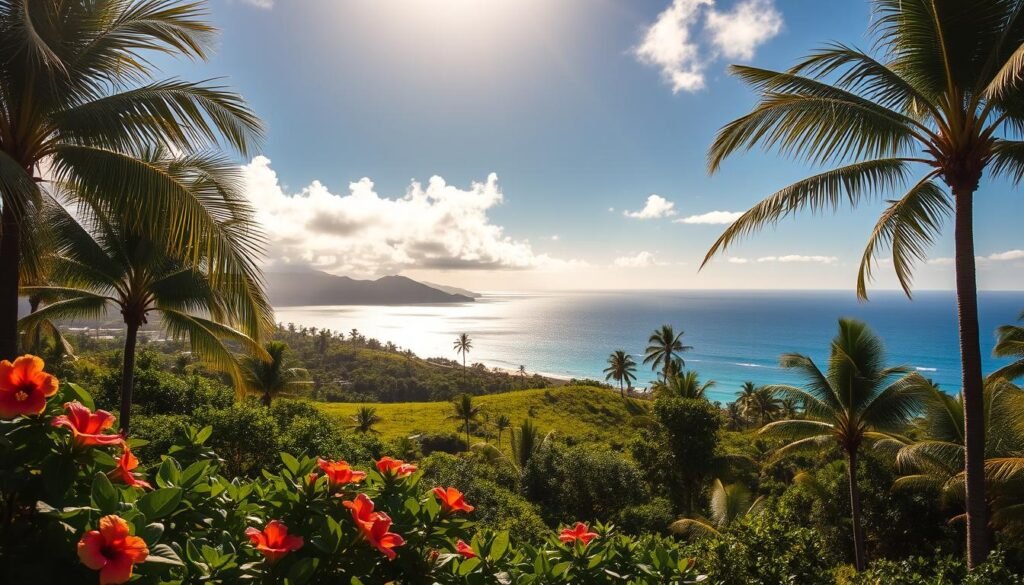
A few night sprinkles don’t ruin a trip; here’s how local winds and microclimates keep days pleasant. I break down why forecasts often show rain yet most daylight hours stay usable for beach time and hikes.best-places-to-visit-for-christmas
Why forecasts show “rain” daily—and why that’s okay
Trade-wind showers are short and very local. Many apps flag any brief overnight or early-morning spritz as rain for a full day. In practice, those showers usually clear fast and leave bright conditions.
Diurnal patterns: brief night/morning showers
Mornings can be cooler with brief sprinkles, then sun builds by late morning. I plan sunrise hikes with light layers and save snorkeling for calmer, clearer mornings.
Windward vs leeward: chasing the sun
Windward slopes stay greener and wetter. Leeward beaches sit sunnier and drier. If your beach clouds up, a 10–20 minute drive often finds sun thanks to microclimates.
“Trade winds usually keep conditions comfortable; when they pause, Kona spells bring warmer, more humid air.”
| Factor | Typical effect | How I use it |
|---|---|---|
| Trade winds | Cool breezes, scattered showers | Plan outdoor afternoons; morning layers |
| Diurnal pattern | Night/morning rain, sunny afternoons | Book snorkeling early; drive for sun midday |
| Windward vs leeward | Wetter vs drier conditions | Choose resorts on leeward side for more beach days |
| Temperatures | 65–72°F lows, 80–86°F highs | Expect warm afternoons, cooler mornings |
Quick tip: check island-specific forecasts from local sources for accurate conditions and pivot plans if a shower pops up. Short rain often means clearer air and a rainbow—embrace it and keep your days flexible.
Hurricane Season in Hawaii: Reality vs Perception
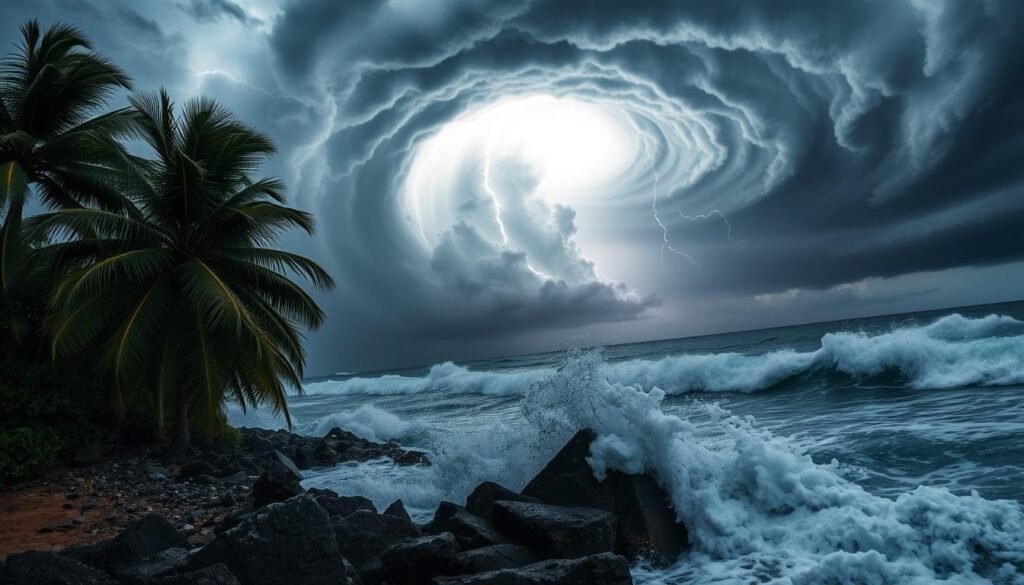
Hurricane season runs June–November, but don’t assume every summer or fall trip faces high risk. I say this because direct hits on major islands are historically rare.
Notable exceptions exist. Hurricane Iniki made landfall in 1992, and Hurricane Lane brought heavy rain and wind without a direct hit. Those events stand out, not repeat patterns.best-places-to-visit-in-montana
What I watch in the forecast
I track long-range outlooks, especially during El Niño years when activity can rise. Closer in, I check weekly forecasts for shifting conditions and storm tracks.
- Science-lite note: wind shear, dry air, and cooler ocean upwelling often weaken systems near the islands.
- Practical tips: expect tropical storms or remnant rains more often than full hurricanes.
- Pack a light rain jacket and a waterproof phone pouch, and consider flexible booking or insurance for peace of mind.
Resorts and local authorities issue clear guidance during watches—follow advisories and prioritize safety.
Bottom line: the season exists on paper, but most visitors never face severe storms. With simple planning, you can still enjoy great weather and rescue beach days by shifting plans if needed.
Peak vs Off-Peak: Crowds, Prices, and Availability
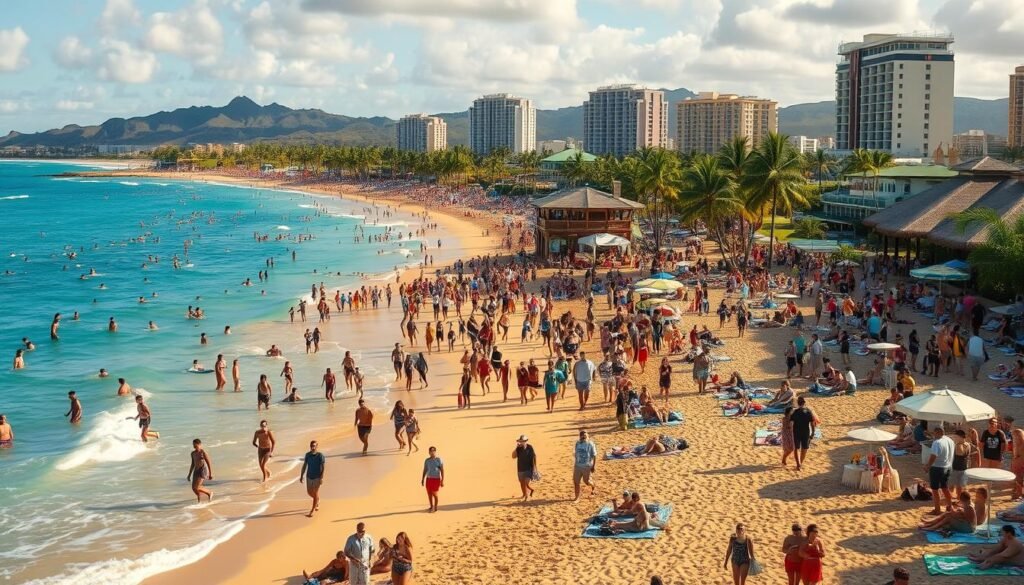
Peak booking windows shape almost every choice — from flights to oceanfront rooms — so I track demand closely.
I define peak periods as mid-December through March and mid-June through August. Snowbirds and school breaks drive those surges, and family travel concentrates in summer while winter draws longer-stay visitors.
| best-places-to-visit-in-october-usa/ |
What sells out first
Oceanfront rooms, family suites, boutique hotels, and rental cars vanish fast. In peak season expect stricter hotel rules like minimum stays and bigger deposits. Read policies before you book.
Off-peak advantages
April through mid-June and September through mid-December offer better availability and lower rates. Shoulder months still deliver great beach days and lively local calendars without heavy crowds.
- Book flights 2–4 months ahead for summer and winter peaks; lock cars even earlier.
- Choose midweek arrivals for cheaper airfares and more hotel options.
- Keep flexible dates and consider multiple islands when hunting deals.
“Start with flights and cars in peak months, then layer hotels and activities.”
| Period | Demand | Tip |
|---|---|---|
| Mid-Dec–Mar | High | Book early; check cancellation terms |
| Apr–mid-Jun | Lower | Flexible dates, room upgrades possible |
| Mid-Jun–Aug | High | Family-focused; reserve cars early |
Final planning tip: watch festival dates — local events create short spikes — and secure flights and cars first for the smoothest booking experience on any trip.
Cheapest Times to Go: Flights and Hotels
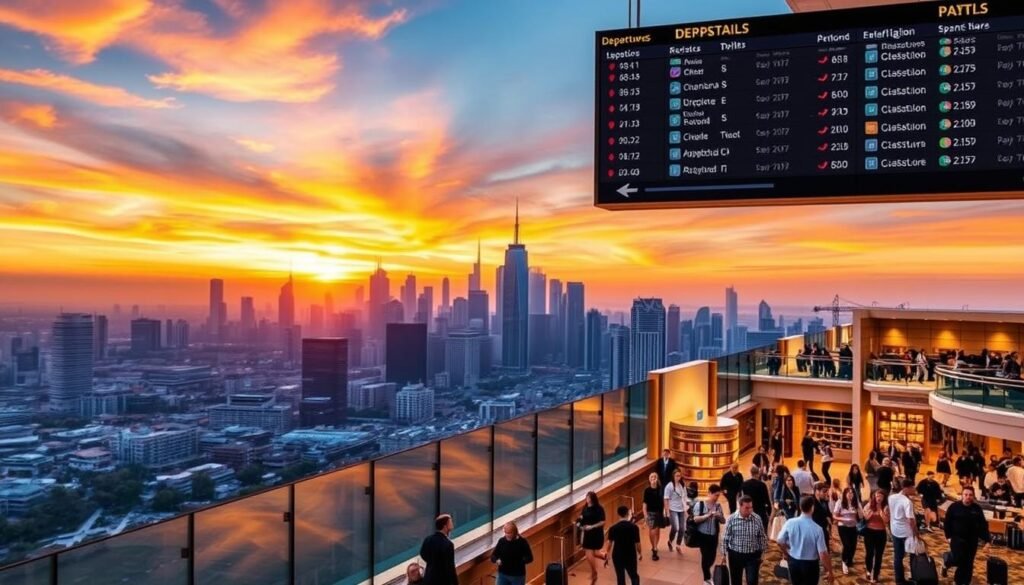
A few well-timed searches can cut hundreds off a trip—here’s how I hunt those deals.
Airfare patterns: why early booking matters
Airfares spike in winter and mid-summer; early March and late November usually show the lowest fares. I set fare alerts and watch nearby airports for hidden savings.
Book about 2–4 months out. That window often beats last-minute buys, even during quieter months. Midweek flights also shave costs.
Hotel price swings: April standouts in Honolulu, September in Lahaina
Honolulu hotels often drop to their lowest rates in April, while January runs among the priciest. Lahaina tends to be cheapest in September and hits high rates in February.
I mix islands or shift a week when possible to unlock combo savings. Flexible cancellation can cost a bit more but offers peace of mind during late-summer and fall, when hurricane season runs June–November.
| Focus | Months | Typical note |
|---|---|---|
| Airfare deals | Early Mar / Late Nov | Watch alerts; midweek saves |
| Honolulu hotels | April | Lower rates vs January highs |
| Lahaina hotels | September | Best value; Feb often costly |
“Lock flights first when you spot a deal, then pounce on hotel promos tied to those dates.”
Action plan: set alerts, check alternate airports, and secure flights first. Then hunt hotels and rental cars for the sweetest combo of rates and conditions. This approach makes more affordable travel possible year-round.
The Islands at a Glance: Matching Your Month to Your Island
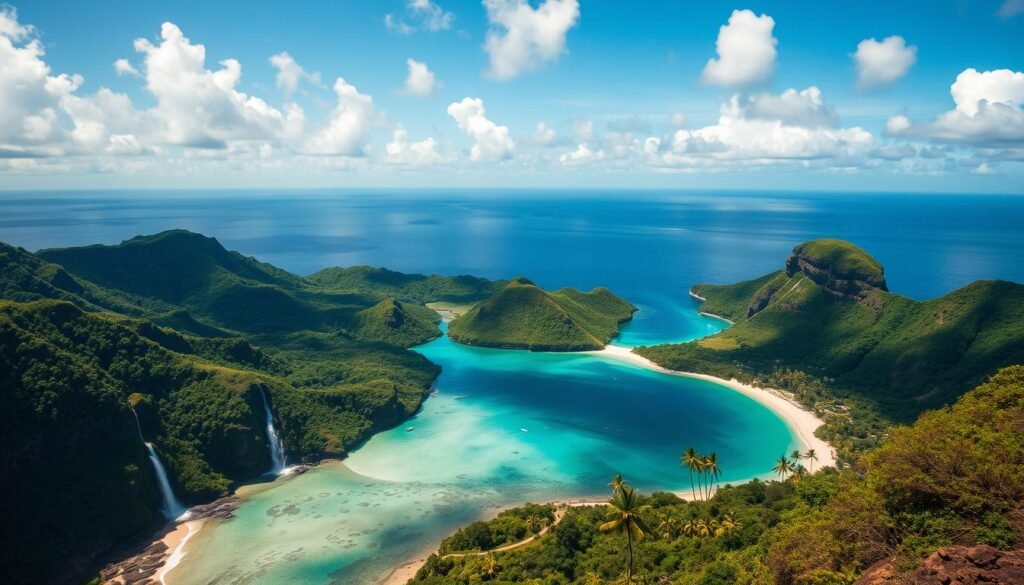
I map each island’s strengths so you can match a month with activities and mood.
Oahu suits culture seekers. Honolulu’s museums and Waikiki energy pair well with year-round festivals like Aloha Festival and Food & Wine events. Plan a spring month for quieter city-and-beach combos.
Maui calls beach lovers. Haleakalā sunrises, calm shores, and whale season from December through March make winter special. Mix a fall month for the warmest water if you prefer swimming over surf watching.
Kauai feels wild and green. Rainforests, river kayaking, and waterfall hikes shine after winter rains and into spring. I suggest spring months for best trails and lower crowds.
Island of Hawaii (Big Island) offers variety. With eight climate zones, active volcanic landscapes, black sand beach access, and top stargazing, you can pick nearly any season for different scenery.
Choose leeward stays for sun and plan windward day trips for gardens and falls.
- I recommend Oahu + Maui or Oahu + Big Island for first-timers who want culture and nature in one trip.
- Repeat visitors should target Kauai’s Na Pali hikes in spring or Big Island coffee country and lava fields year-round.
- Remember ferries don’t link all islands—allow buffers for interisland flights and tight connections.
| Island | Top draws | Suggested month/season | Why pick it |
|---|---|---|---|
| Oahu | Culture, Waikiki, festivals | Spring | City life plus quieter beaches |
| Maui | Beaches, Haleakalā, whale | Winter (whale) / Fall (warm water) | Sunrises, beach time, marine life |
| Kauai | Rainforests, rivers, waterfalls | Spring | Best trails and lush scenery |
| Big Island | Volcanoes, eight climate zones, stargazing | Year-round (pick by interest) | Diverse landscapes; wide activity mix |
Water and Air Temperatures: What “Warm” Really Feels Like
I’ll translate thermometer numbers into practical comfort so you know what to expect on beach days and hikes.
Air highs and lows
Most days feel like mainland summer, with highs around 80–86°F and lows near 65–72°F. That range keeps mornings crisp and afternoons warm for outdoor plans.best-places-to-visit-in-oregon
Ocean warmth and the peak window
Sea water warms through late summer into early fall, giving the clearest, friendliest swims for long snorkeling sessions.
- Realistic expectations: daily conditions often match typical summer comfort thanks to steady trade winds.
- Best swim time: early mornings usually have calmer water and better clarity.
- Packing tip: bring UPF shirts and reef-safe sunscreen any month.
- High elevations: Haleakalā and Mauna Kea need jackets year-round despite warm beach temps.
I rely on these numbers when I plan hikes, swims, and sunset dinners.
“Short night or morning showers rarely derail beach plans; they often clear by midday.”
| Element | Range / Peak | How I use it |
|---|---|---|
| Air temperatures | 65–72°F lows; 80–86°F highs | Hike mornings; beach afternoons |
| Ocean & water | Warmest late summer–early fall | Long swims, beginner snorkeling |
| Daily weather | Trade-wind comfort; brief showers | Plan early swims; pack light layers |
Rainy Months, Sunny Days: How I Plan Around Showers
I design winter schedules to catch sun pockets and treat brief rain as part of the island rhythm.
November through January tends to bring the most rain, but showers are often short and local. I stack outdoor plans early in the day and save afternoons for museums, markets, or spa time.
Flexible winter moves that keep days bright
I book leeward-side lodging to boost sunny hours and rent a car so I can drive windward when a window appears. That swap often turns a watered trail into a waterfall wonder shortly after a shower clears.
Small checklist I use: a light rain jacket, waterproof phone pouch, quick-dry layers, and a backup café near beaches for picnic pivots. I also schedule big excursions early in my trip so I can reshuffle if weather forces a change.
Tools and mindset
I use weather apps sparingly and check local webcams to chase sun across short drives. If a generic rain icon appears, I don’t cancel a beach day—trade-wind showers usually fade fast.
“Embrace quick showers and chase rainbows — they’re part of the islands’ charm.”
| Plan | Why it helps | Practical tip |
|---|---|---|
| Morning outdoor activities | Lower chance of rain, calmer seas | Hike or snorkel before noon |
| Leeward stay | More sunny hours for beach days | Book resorts on leeward coasts |
| Car rental | Chase quick sun pockets across short drives | Reserve early in peak season |
| Flexible afternoons/dinner | Turn brief wet spells into indoor experiences | Pick a nearby luau or café for backup |
For more on picking dates and patterns, see my extended guide on the best time and adapt plans by season and weather.
Best Weather vs Best Value: Finding Your Personal Sweet Spot
A smart calendar pick lets you chase warm days, lower prices, and fewer crowds without big sacrifices.
Shoulder months—April–June and September–October—deliver a rare mix: steady sun, calmer beaches, and friendlier hotel rates.
Early November and late March are bonus windows. Airfares and rooms dip while sunshine usually holds, so you can lock value with little compromise.
- Winter attracts surfers and whale watchers, but expect peak rates and early booking needs.
- Summer gives reliable sun and calm south shores for families, though crowds and prices rise.
- Pick leeward resorts for beach days and plan windward drives for lush scenery on spare afternoons.
I advise setting one primary goal—budget, beach weather, or festivals—and let that drive your calendar choices. Then monitor fares and hotel trends for your target months so you can pounce on sales.
“If you’re flexible, shoulder seasons are the sweet spot; if you’re fixed, plan early and prioritize what matters most.”
| Goal | Top months | Why |
|---|---|---|
| Value + comfort | Apr–Jun, Sep–Oct | Good weather, fewer crowds, better prices |
| Sale windows | Early Nov, Late Mar | Lower fares with minimal conditions trade-off |
| Peak experiences | Winter, Summer | Surf, whales, family travel; book early |
Quick tip: use flexible cancellation policies so you can lock current deals and still shift dates if a rare storm or festival changes plans.
Festivals I Plan Trips Around
I pick dates not just for weather or crowds but for moments where local culture lights up a trip. Festivals add layers to activities and make an island stay feel like a celebration rather than just a beach weekend.
Signature cultural events worth timing for
Key events I watch
Lei Day (May) brings lei making, hula, and quiet street parades—great for families and photographers alike.
Waikiki SPAM JAM (April) pairs well with spring’s drier weather and is a fun, food-forward block party.
Lantern Floating Ceremony (Memorial Day) is a moving evening ritual that I schedule with a calm day beforehand for walking and reflection.
King Kamehameha Day & Pan Pacific Festival (June) offer parades, music, and pageantry—perfect for culture-driven travel.
Prince Lot Hula Festival (July) and Na Hula Festival (Aug) showcase dance and tradition when beaches remain warm.
POW! WOW! Hawaii (Feb) is a must for art lovers; it fills streets with murals, live music, and weekend gallery hops.
Honolulu Festival (March) and Hawaii Food & Wine Festival (Oct) give culinary anchors and cross-island cultural exchanges I often build a trip around.things-to-do-in-leavenworth
- Book event tickets and dinners early, especially on Oahu during peak months.
- Pair events with seasons: Aloha Festival in September links nicely with warm water for beach days.
- Leave buffer days around major celebrations so travel stays relaxed.
- Check official event sites for exact month dates each year—schedules shift.
Festivals are a powerful way to add meaning and memory to your travel; they turn good weather into unforgettable cultural moments.
| Event | Typical month | Why go |
|---|---|---|
| Lei Day | May | Traditional lei making, hula, family-friendly |
| Waikiki SPAM JAM | April | Street food, lively crowds, spring weather |
| Lantern Floating | Memorial Day | Evening ceremony, reflective experience |
| Hawaii Food & Wine Festival | October | Culinary events, chef showcases |
| POW! WOW! Hawaii | February | Live murals, galleries, street performances |
Families, Couples, Surfers, Foodies: Tailoring Your Dates
I tailor date advice around family rhythms, quiet escapes, surf windows, and food events so your trip fits who you’re traveling with.
School calendars and family-friendly windows
Mid-June through August lines up with school breaks, so expect crowds and higher rates. For a smoother stay, book months ahead and pick leeward beaches with gentle entries for kids.
Plan mornings for swims and shaded parks, and save afternoons for naps or museum stops.
Romance and quieter beaches for couples
April–June and September–October offer quieter beaches, better suite availability, and sunset dinners without heavy crowds. I build romantic days with sunrise hikes, spa time, and stargazing on Maui or the Big Island.
Surf chasers and culinary travelers
Surfers aim north/west in winter for big waves and south shores in summer for friendlier breaks. Monitor daily conditions and follow lifeguard guidance for safety.
Foodies should align dates with SPAM JAM, Pan Pacific, or Hawaii Food & Wine to tap special menus and festival events.san-diego-things-to-do
“Split stays—Oahu for culture, Maui for beaches—let you mix activities and reduce travel stress.”
| Traveler | Top months | Quick tip |
|---|---|---|
| Families | Mid‑Jun–Aug | Book early; leeward shores, morning swims |
| Couples | Apr–Jun, Sep–Oct | Quieter beaches, sunset dinners, suites |
| Surfers & Foodies | Winter for big surf; Apr–Jun & Sep–Oct for festivals | Check conditions daily; reserve festival seats |
Packing by Season: What I Actually Use
My carry-on covers both beach mornings and cool summit evenings without fuss. I pack with layers and reef-safe gear so plans stay flexible across sun, wind, or brief showers.
Beach basics and sun protection
Essential items: multiple swimsuits, UPF rash guard, polarized sunglasses, wide-brim hat, and reef-safe sunscreen. I also pack a quick-dry coverup for a relaxed beach lunch.
Light layers for mountains and trade winds
I bring a breathable long-sleeve, a packable windbreaker, and long pants for Haleakalā or Mauna Kea evenings. Temperatures can drop, so a light cardigan works well for cool nights.
Rainwear for winter visits and windward hikes
A compact rain jacket and small umbrella ride with me during winter or on windward day trips. A dry bag, waterproof phone case, and microfiber towel are for boat days and surprise sprinkles.
- Water shoes plus lightweight sandals for rocky entries and resort strolls.
- Breathable cotton or linen and quick-dry shorts for easy beach‑to‑lunch swaps.
- Small backpack with hydration, snacks, first-aid, and motion remedies for winding roads.
Keep gear minimal but versatile: layer up for peaks, strip down for sand, and you’ll handle changing conditions with ease.things-to-do-in-san-juan-puerto-rico
Smart Booking Timeline: Flights, Hotels, and Cars
I treat flights, hotels, and rental cars like puzzle pieces—fit them early, then tweak. That approach keeps stress low and helps me lock good seats and oceanfront rooms without overpaying.
When I lock flights for peak vs shoulder seasons
Peak months (Dec–Mar, mid‑Jun–Aug) demand early moves. I buy flights about 3–4 months ahead and grab refundable hotel rates next.
For shoulder season travel I watch fares 4–6 months out, pounce on dips, and often secure solid deals 2–3 months before departure.
Why rental cars sell out—and how I avoid it
Rental cars disappear fast during heavy crowds. I reserve a car immediately after flights, choose cancellable rates, and recheck weekly for price drops.
High‑demand activities—sunrise summit permits, popular luaus, and boat tours—get booked as soon as dates are set, especially on Maui and Oahu.
- Tip: use flexible date tools for midweek savings.
- Factor festival weeks and holidays; they tighten supply and bump prices and conditions.
- I keep one flexible night in shoulder bookings so I can pivot islands or coasts if a deal appears.
My rule: lock flights in peak windows, reserve cars immediately, then finalize hotels and high‑demand activities.
| Item | When to book | Why |
|---|---|---|
| Flights | 3–4 months (peak); 2–4 months (shoulder) | Better fares, seat choice |
| Rental car | Immediately after flights | Avoid sellouts, flexible cancel |
| Hotels & tours | Right after flights | Lock rooms, sunrise permits, luaus |
Conclusion
This closing note gives a simple map for matching months with weather, crowds, and costs.
I’ll recap: Hawaii is a year-round draw, so the best time depends on whether you chase sun, calm beaches, or savings. Shoulder seasons—April–June and September–October—offer warm weather and softer crowds.
Activity anchors matter: whales and big north‑shore surf run in winter, snorkeling clarity peaks in summer, and water hits its warmest in early fall. Watch airfare dips in early March and late November; Honolulu often drops in April while Lahaina shines with deals in September.
Pick leeward stays, plan beach mornings, keep afternoons flexible, and book early for peak windows. Choose islands by interest—culture on Oahu, whales and beaches on Maui, rainforests on Kauai, volcanic vistas on the Big Island—and your trip will feel planned and personal.


